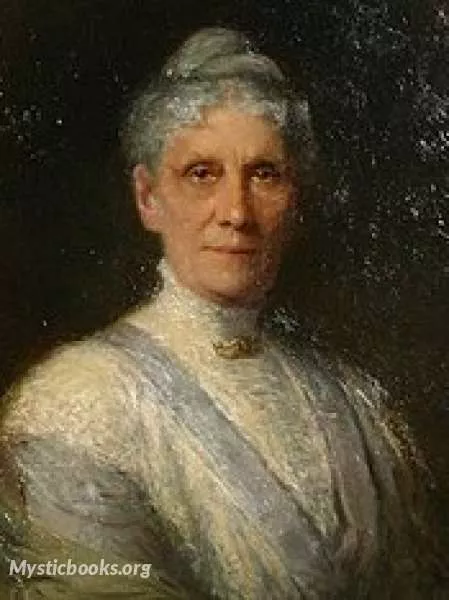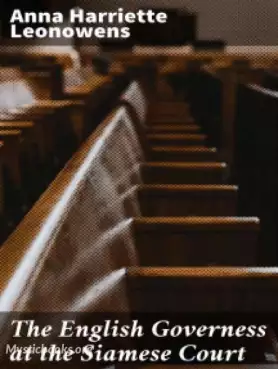
Timeline
Title
Country/Nationality
Anna Leonowens
Anna Harriette Leonowens was an Anglo-Indian or Indian-born British travel writer, educator, and social activist.
She became well known with the publication of her memoirs, beginning with The English Governess at the Siamese Court (1870), which chronicled her experiences in Siam (modern Thailand), as teacher to the children of the Siamese King Mongkut. Leonowens' own account was fictionalised in Margaret Landon's best-selling novel Anna and the King of Siam (1944), as well as adaptations for other media such as Rodgers and Hammerstein's 1951 musical The King and I.
During the course of her life, Leonowens also lived in Australia, Singapore and Penang, the United States, Canada and Germany. In later life, she was a lecturer of Indology and a suffragist. Among other achievements, she co-founded the Nova Scotia College of Art and Design.
Anna was born in Ahmednagar in the Bombay Presidency of Company-ruled India, on 5 November 1831, three months after the death of her father. While she was christened Ann Hariett Emma Edwards, Leonowens later changed Ann to "Anna", Hariett to "Harriette" and ceased using her third given name (Emma).
For most of her adult life, Anna Leonowens had no contact with her family and took pains to disguise her origins by claiming that she had been born with the surname "Crawford" in Caernarfon, Wales, and giving her father's rank as Captain. By doing so, she protected not only herself but her children, who would have had greater opportunities if their possibly mixed-race heritage remained unknown. Investigations uncovered no record of her birth at Caernarfon, news which came as a shock to the town that had long claimed her as one of its most famous natives.
A few months after Anna's birth, her mother remarried. The stepfather was Patrick Donohoe, an Irish Catholic corporal of the Royal Engineers. The family relocated repeatedly within Western India, following the stepfather's regiment. In 1841, they settled in Deesa, Gujarat. Anna attended the Bombay Education Society's girls school in Byculla (now a neighbourhood of Mumbai) that admitted "mixed-race" children whose military fathers were either dead or absent.
In 1847, Donohoe was seconded as assistant supervisor of public works in Aden. Whether the rest of the family went with him or stayed in India is unsure.
Anna Edward's husband-to-be Thomas Leon Owens, an Irish Protestant from Enniscorthy, County Wexford, went to India with the 28th Regiment of Foot in 1843. From a private, he rose to the position of paymaster's clerk (rather than the army officer suggested by her memoir) in 1844, serving first in Poona, and from December 1845 until 1847 in Deesa.
In 1852, the young couple, accompanied by Anna's uncle, W. V. Glasscott, sailed to Australia via Singapore, where they boarded the barque Alibi. The journey from Singapore was long and while on board Anna gave birth to a son, also named Thomas. On 8 March 1853, nearing the Western Australian coast, the Alibi was almost wrecked on a reef. Ten days later Anna, Thomas, their newborn son and Glasscott arrived in Perth. Glasscott and Thomas Leonowens quickly found employment as clerks in the colonial administration. Later in 1853, Glasscott accepted a position as government commissariat storekeeper at Lynton, a small and remote settlement that was the site of Lynton Convict Depot.
The Leonowens family left Australia abruptly in April 1857, sailing to Singapore, and then moving to Penang, where Thomas found work as a hotel keeper. In or before the first week of May 1859, Thomas Leonowens died of "apoplexy" and was buried (7 May 1859) in the Protestant Cemetery in Penang. His death left Anna Leonowens an impoverished widow. Of their four children, two had died in infancy. She returned to Singapore, where she created a new identity as a Welsh-born lady and widow of a British army major. To support her surviving daughter Avis and son Louis, Leonowens again took up teaching and opened a school for the children of British officers in Singapore. While the enterprise was not a financial success, it established her reputation as an educator.
In 1862, Leonowens accepted an offer made by the consul in Singapore, Tan Kim Ching, to teach the wives and children of Mongkut, King of Siam. The king wished to give his 39 wives and concubines and 82 children a modern Western education on scientific secular lines, which earlier missionaries' wives had not provided. Leonowens sent her daughter Avis to school in England, and took her son Louis with her to Bangkok. She succeeded Dan Beach Bradley, an American missionary, as teacher to the Siamese court.
Leonowens served at court until 1867, a period of nearly six years, first as a teacher and later as language secretary for the king. Although her position carried great respect and even a degree of political influence, she did not find the terms and conditions of her employment to her satisfaction. And despite her position at the king's court she was never invited into the social circle of the British merchants and traders of the area.
Books by Anna Leonowens

The English Governess at the Siamese Court
In 1862 Anna Leonowens accepted an offer made by the Siamese consul in Singapore, Tan Kim Ching, to teach the wives and children of Mongkut, king of Siam. The king wished to give his 39 wives and concubines and 82 children a modern Western education...